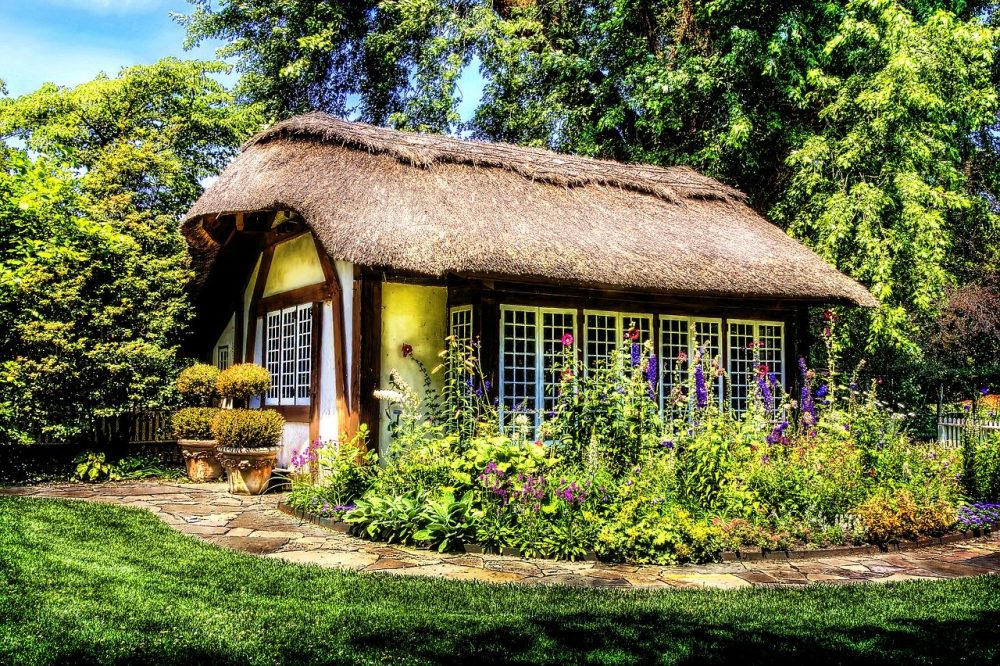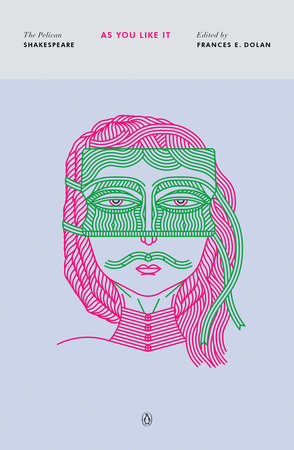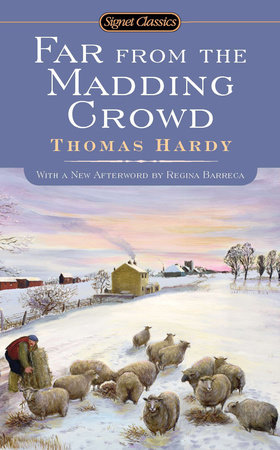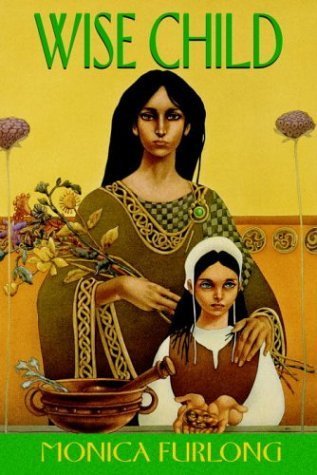Electric Lit relies on contributions from our readers to help make literature more exciting, relevant, and inclusive. Please support our work by becoming a member today, or making a one-time donation here.
.
Cottagecore—the escapist aesthetic that romanticizes a simple, pastoral lifestyle—has been the internet trend of 2020. As Rebecca Jennings notes in Vox, cottagecore has become a way to make this national quarantine romantic by aestheticizing the joys of crafts and rural life. It’s also deeply rooted in previous pastoral movements, inspired by Romanticism (think: nature poems by Coledridge and Wordsworth) and pre-Raphaelite painters (like John William Waterhouse and William Morris). But as set in stone as the aesthetic seems to be, cottagecore is also a fluid movement filled with contradictions. On the one hand, it embraces returning to nature; on the other, it is an entirely virtual (and thus technology-dependent) phenomenon. Similarly, while cottagecore is coated with nostalgia for a simpler past—it’s been criticized for valorizing colonialism—it is also associated with progressive politics and LGBTQ+ subcultures. Accordingly, the books below showcase the long tradition of pastoral novels, as well as contemporary meditations on nature and cottage life. They offer a variety of takes on what could be called “cottagecore literature,” extending beyond Beatrix Potter and L. M. Montgomery—while still relating to the cottagecore aesthetic in some way.
So the next time you pack a picnic lunch for frolicking in the meadows, consider tossing in one of these books to idle away your afternoon with.
The Way Through the Woods: On Mushrooms and Mourning by Long Litt Woon
A memoir about mycology and mourning, The Way Through the Woods explores the author’s foray into mushroom foraging after her husband’s sudden death. Woon acutely describes the feelings of bleak grief after losing her partner of 32 years, and how mushrooming offered a way to connect with nature, re-vitalizing her life. Woon also offers educational insight into the fascinating forms of fungi all around us, from Norwegian forests to Central Park. After reading her vivid descriptions, you may find yourself taking a second look at the fungal growth on your week-old leftovers—or embarking on a mushroom forest adventure of your own.
World of Wonders: In Praise of Fireflies, Whale Sharks, and Other Astonishments by Aimee Nezhukumatathil, illustrated by Fumi Nakamura
If looking for a way to appreciate the joy and beauty of our immediate surroundings, World of Wonders is the perfect choice—both in aesthetics and content. Nezhukumatahil’s non-fiction essay collection explores how we can find wonder in the everyday, even in places or creatures that we might not immediately deem “cute” or lovely. Growing up, Nezhukumatahil was constantly transplanted, moving from one different landscape to another; she found solace and kinship with the creatures around her, no matter where she went. Her lyrical prose is exquisitely illustrated by Nakamura’s vibrant and whimsical drawings.
As You Like It by William Shakespeare
The OG pastoral, written by someone who created a canon for pastoral plays. Published around 1599, As You Like It features genderbending, an idyllic mini-dukedom in the woods, and love verses carved onto trees. Rosalind—who dresses up as a man after she is exiled to the woods by her evil uncle and finds a way to set up a series of marriages—is a craftsy, DIY heroine after any cottagecore millennial’s own heart. (Side note: where is the contemporary adaptation of this play that we’re all waiting for? She’s the Man and 10 Things I Hate About You couldn’t hold a candle to a cottagecore version of As You Like It. Imagine Instagram poetry carved onto your neighborhood oak tree!)
Far From the Madding Crowd by Thomas Hardy
Another classic of the traditional pastoral genre, Hardy’s 1874 novel shows both the idyllic and harshness of a farming community in rural Southwest England. The spirited, proud heroine, Bathsheba Everdene, inherits a large farming estate; while running the estate, Bathsheba also juggles the attention of three men. Hardy relishes in the details of everyday Victorian life (making this an apt supplement for lovers of Animal Crossing), as well as the drama of finding love. Bonus for those interested in animals: lots of sheep.
Braiding Sweetgrass: Indigenous Wisdom, Scientific Knowledge and the Teachings of Plants by Robin Wall Kimmerer
If you’re worried about cottagecore having a colonial edge, throw away all the white influencers and read this instead. Kimmerer draws upon her background as a biology professor and Potawatomi woman, braiding together a narrative that is both holistic (such as symbiotic ecological systems at large) and specific (such as sweetgrass harvesting and lichen growth). Furthermore, she shows how these elements are interconnected to one another, and calls on us to be more mindful about the collateral damage we wreak on our environment. Kimmerer shows how we must cultivate “cultures of regenerative reciprocity” and “demand an economy that is aligned with life, not stacked against it,” with practices that acknowledge and celebrate the natural world around us.
Wise Child by Monica Furlong
Set in a Scottish village during the Dark Ages, a nine-year-old orphan is taken in by the local wisewoman, Juniper. Wise Child learns about herbs, midwifery, and witchery; however, when her estranged mother comes back to claim her, Wise Child is faced with difficult choices about both magic and loyalty. If you’re specifically into the witchcore aesthetic or extremely invested in your home herb garden, Wise Child may be the book for you.
Pilu of the Woods by Mai Nguyen
If you’re more into faeriecore than witchcore, try Nguyen’s graphic novel about a friendship between a human girl and a tree spirit. Willow struggles with her turbulent emotions (vividly drawn by Nguyen as little water monsters), particularly in the wake of her mother’s death. After a rough day, she runs away to the nearby forest–and stumbles upon an equally distraught tree spirit, Pilu, who is lost. Together, they find a path home through the woods. Pilu of the Woods is a bittersweet and beautifully illustrated look at friendship, family, and self-discovery.
Pilgrim at Tinker Creek by Annie Dillard
If you’ve already read Thoreau’s Walden, built your own log cabin, and are looking for another narrative on immersing oneself in nature, look no further. Winner of the 1975 Pulitzer Prize for General nonfiction, Pilgrim at Tinker Creek is a lyrical meditation and updated Transcendentalist homage. Dillard tracks the course of one year in Virginia’s Roanoke Valley, exploring the region on foot. She is meticulous about describing the flora and fauna around her, but also imbues the narrative with thoughts on theology, solitude, and the inherent violence and beauty of nature.
Trophic Cascade by Camille T. Dungy
Trophic Cascade is another lyrical, acutely observed meditation on nature; Dungy’s poetry collection explores the themes of nature, motherhood, and power, including the ways in which racial violence plays out within our ecosystem. With sharp, vibrant prose, Dungy explores what it means to be rooted and inextricably connected to the world around us. “It seems everyone is silvered, dead, / until we learn to see the living—” she writes; in Dungy’s work, the ability to see life and hope comes from observing our environment and bearing witness. She is also the editor of Black Nature: Four Centuries of African American Nature Poetry, an anthology (not included on this list just because anthologies feel like an awful lot of people for one cottage).
Arcadia by Lauren Groff
What can go wrong when a group wants to build its own bohemian community? Arcadia shows the dark side of “cottagecore,” or what happens when an aesthetically, idealistically pleasing idea turns sour. Bit, the novel’s shy protagonist, grows up in a hippie commune where everything is crafted by hand and everyone reveres nature. However, as Bit becomes an adult, he must reckon with the fallout of the commune and grapple with contemporary environmental disasters. Groff nails the intensity of climate change anxiety, while simultaneously luxuriating in beautiful descriptions of nature.
The Wild Iris by Louise Glück
If you’re looking for a poetry book to place your dried flowers in, The Wild Iris is the perfect volume. Glück’s Pulitzer-winning collection, with its exquisitely crafted language, is one to reread on any occasion, but especially when you’re dreaming of running away to the woods. The flowers are often the narrators in Glück’s poems, such as “Wildflowers” or “Silver Lily.” Interspersed between the flower poems are various forms of prayers, like “Matins.” Glück explores the cycles of life and death, joy and grief, intimacy and distance in both the human and natural world. The Wild Iris questions—and ultimately celebrates—what it means to be alive “in the raw wind of the new world.”
Mandy by Julie Andrews Edwards
Who could have known that Julie Andrews (yes, Mary Poppins, Maria from Sound of Music, and iconic Princess Diaries grandmother) would be the prophetess of cottagecore? Andrews’ novel centers on Mandy, a young orphan who decides to fix up a deserted cottage. Mandy climbs over the orphanage wall and, over the course of a year, becomes increasingly obsessed with crafting a lovely space for herself. This may be a book written for young children, but adults and kids will both be charmed by Mandy’s quest to find a place she can feel at home.












